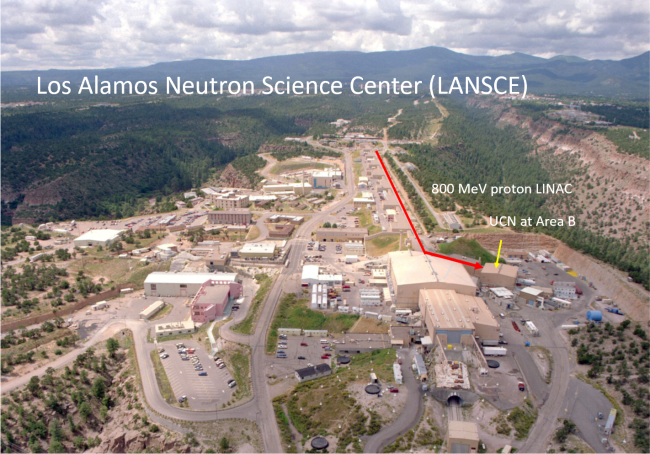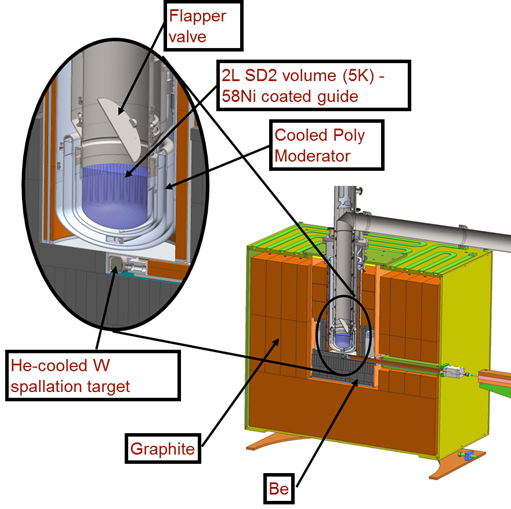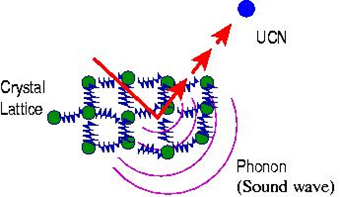The Los Alamos Neutron Science Center (LANSCE) has a world-class ultracold neutron source. This is the “highest” UCN source in the world. It also outputs the highest density.

My dissertation research realized the first solid-deuterium based UCN source in the world. The key was to convert the D2 molecules in the para (excited state) into the ortho (ground state). The UCN source at LANL was built and became operational to support fundamental neutron physics research since 2005.
The UCN source uses neutrons created by the LANSCE 800 MeV protons. The high-energy protons, through the spallation process, evaporate neutrons from the tungsten target (cooled by circulating He gas). The MeV neutrons are moderated by small slabs of cold polyethylene to below 100 K. The moderated cold neutrons interact with solid deuterium (cooled to 5 K by circulating He liquid/gas) and downscatter to become ultracold through the superthermal process. Here are the schematics of the LANL UCN source.

By employing the so-called superthermal method [Golub1975], it is possible to surmount Liouville's theorem, which limits the production of UCN in other sources. In this method, a UCN converter, which has a temperature much higher than that of UCN (~ mK) but lower than that of typical cold neutrons (several 10's of kelvin), converts cold neutrons to ultracold neutrons. Incident neutrons are downscattered with their kinetic energies dissipated into the bulk medium to create phonons. The reverse process of neutron upscattering (i.e., gaining energy from coupling to the thermal bath of phonons) is heavily reduced as the population number of phonons is suppressed by the Boltzman factor exp-Δ/kB T, where Δ is the energy difference between cold and ultracold neutrons and T is the temperature of the converter.

Most of my research with UCN took place at this facility.
Below is a collection of videos recording us bottling UCN, transporting UCN, and detecting UCN:
Here are a few videos of us playing with the Halbach array:
and instrumenting the trap door:
In November 2021, we did a measurement of the UCN spectrum using a gravity crank spectrometer. Here is a video demonstrating how it works:
